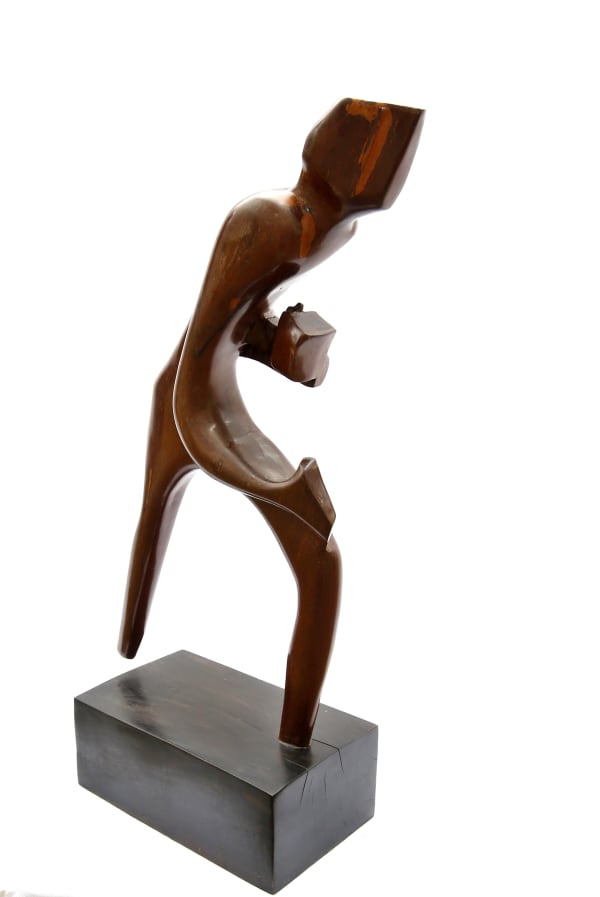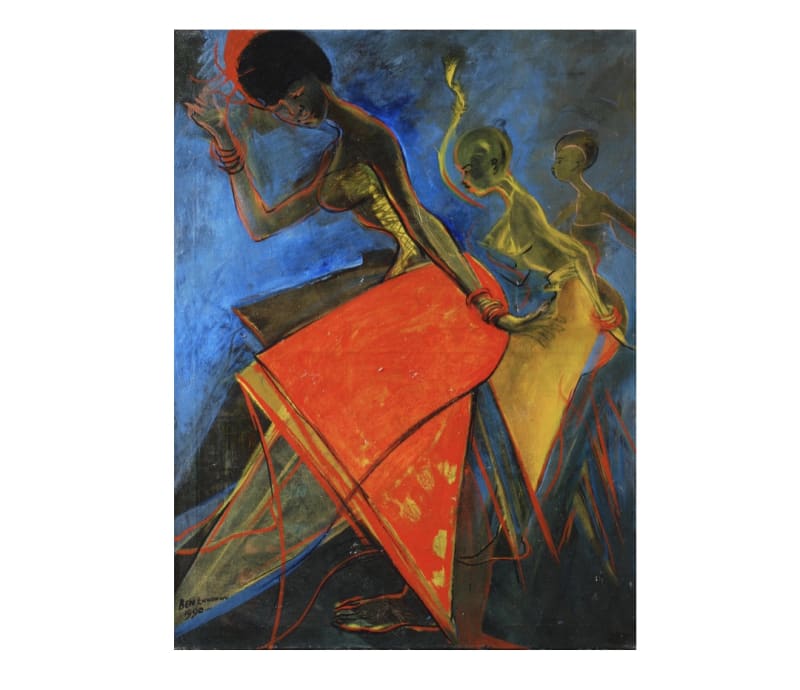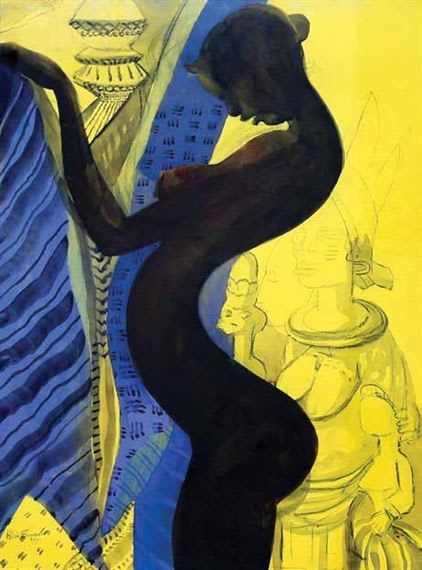Ben Enwonwu Nigeria, 1917-1994
Working as a painter and sculptor throughout Nigeria’s colonial, independence, and post-independence periods, Ben Enwonwu formed a unique modernist language that speaks to the country’s culture and national identity.
Ben Enwonwu was the first artist from the African continent to gain global visibility. Born in 1917 in Onitsha, Nigeria, Ben Enwonwu was trained in the first accredited formal art education program in the country. He received a scholarship to study at the Slade School in London, becoming its first African graduate. Ben Enwonwu quickly garnered international praise for his work. In 1949, Ebony Magazine coined him “Africa’s greatest artist”. By 1950, his work had been exhibited across four continents, in Africa, Europe, Asia and the USA.
In 1956, Enwonwu was commissioned to produce a bronze sculpture of Queen Elizabeth II. As the first African artist to be commissioned by the Queen, the unveiling became a major international sensation. A version of his iconic sculpture of Anyanwu, the Igbo sun god, was given as a gift to the United Nations from Nigeria in 1966, where it is permanently installed today.
Over the last few years, Enwonwu’s artworks have made international headlines with record-breaking sales at auction. One of his iconic paintings of Tutu achieved over a million pounds at Bonhams in 2018 after it was found in a London apartment. Soon after, his painting Christine, a portrait of an African-American woman living in Lagos in the 1970s, also achieved a record sale at Sotheby’s in October 2019. To this day, Ben Enwonwu’s artworks, critical writings, and commentary on the art of his time continue to be among the most substantial of any modern artist in the global context.
Ben Enwonwu initially studied art under British art educator Kenneth C. Murray in the first government art program in colonial Nigeria, graduating from Government College (Nigeria) in 1934. He continued his studies in the United Kingdom, at Goldsmith College and Ruskin College, Oxford, before graduating from the Slade School of Fine Art in 1948.
Enwonwu’s artworks were first shown internationally at the Zwemmer Gallery in London in 1937, one of the first international exhibitions of modern African art, and at the Glasgow Empire Exhibition in 1938. In 1946, Enwonwu represented Africa at the International Exhibition of Modern Art at the Musee d’Art Moderne in Paris. Enwonwu exhibited his work in a series of shows in New York, Boston and Howard University in 1950. That same year, Enwonwu held a major exhibition at Gallery Apollinaire in Milan.
Two of Enwonwu’s most well known sculptures are Queen Elizabeth II’s commissioned sculpture, marking the first African artist to be commissioned by the Queen, and his iconic sculpture of Anyanwu, the Igbo sun god, a version of which is permanently installed at the headquarters of the United Nations in New York.
In Nigeria, Enwonwu served as Art Supervisor of the Colonial Office upon his return from his studies in 1948. Enwonwu also worked as the cultural advisor to the newly formed Nigerian government after independence in 1960. He also served as a teacher, writer and art critic. Enwonwu was a professor at the University of Ife, and lectured at Harvard University, New York University and Howard University in the United States. He was the Artistic Adviser to FESTAC ’77, the Second World Black and African Festival of Arts and Culture in Lagos, Nigeria in 1977.
In 1980, Enwonwu was awarded the National Order of Merit by the Nigerian government for his contribution to Nigeria’s art and culture. His works have been included in exhibitions at the Tate, National Gallery of Lagos, the Smithsonian National Museum of African Art, PS.1 Contemporary Art Center, Museum of Contemporary Art Chicago, Museum Villa Stuck, and Whitechapel Gallery.
-

Nigerian artists are at the fore at the 1-54 fair and beyond
Gareth Harris and Chinma Johnson-Nwosu, The Art Newspaper , October 12, 2023 -

The 9 best things to see at Frieze art fair 2023
Laura Freeman, The Times UK, October 6, 2023 -

Artnet: "Nigerian Artist Ben Enwonwu Was an International Star in the 1960s. Now His Art Is Making a Comeback"
Rebecca Anne Proctor, Artnet, October 15, 2020 -

The Art Newspaper: "If you're coming to buy, you have two hours to do it"
Anny Shaw, The Art Newspaper, October 9, 2020
-

Frieze Masters: Ben Enwonwu
11 - 15 Oct 2023kó is pleased to announce a solo presentation of renowned Nigerian artist Benedict Chukwukadibia Enwonwu MBE (1917-1994), known as Ben Enwonwu, at Frieze Masters, taking...Read more -

Frieze Masters: Spotlight
Ben Enwonwu 9 - 16 Oct 2020Nigeria's kó gallery debuts at Frieze Masters 2020 featuring African modernist Ben Enwonwu.Read more


















